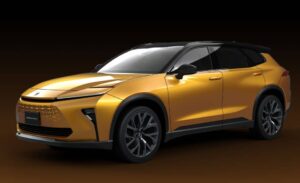These EVs aren’t for sale yet but are in various stages from concept to production—and perhaps a few may never see the light of day.
Electric cars are the future, and each year we’ve seen automakers add more EVs to their lineups. Everyone is working on electric vehicles, from well-established existing manufacturers to new names such as Lucid, Canoo, and Rivian. We’ve compiled a list of every electric vehicle, from concept to production, that isn’t available yet but will be soon.
Acura ZDX (Expected: Early 2024)
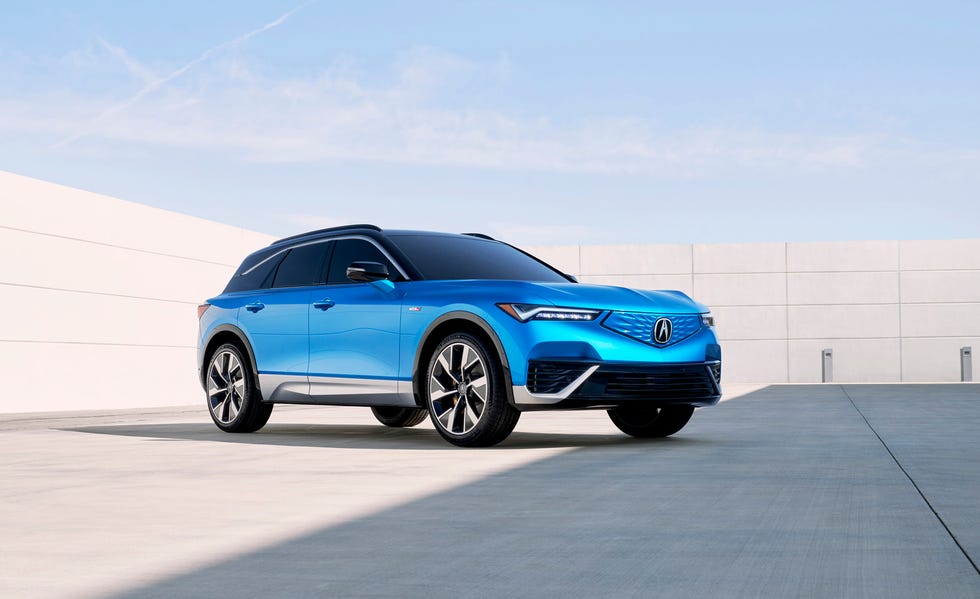 ACURA
ACURAYou may recognize the ZDX name from Acura’s old coupe-SUV model, but this time around the moniker adorns a midsize crossover that becomes Acura’s first EV when it arrives early next year. The 2024 ZDX rides on General Motors’ Ultium battery platform—sharing components with the Cadillac Lyriq—and the 102.0-kWh battery will provide up to 325 miles of range. The 340-hp, single-motor, rear-wheel-drive A-Spec model will be joined by a 500-hp, dual-motor, all-wheel-drive Type S, which also wears upgraded brakes, adaptive dampers, and air suspension. The A-Spec should start around $60,000. —Caleb Miller
Alfa Romeo Giulia EV (Expected: 2025)
 ALFA ROMEO
ALFA ROMEOAlfa Romeo has confirmed the gas-powered Giulia (seen above) will be revamped in the coming years, dropping its Ferrari-derived V-6 in favor of an electric powertrain for 2025. We expect the base version will make around 350 horsepower, while the Veloce will produce closer to 800 horsepower. The top-of-the-line Giulia will continue to carry the historic Quadrifoglio name and should make upwards of 1000 horsepower. The new Giulia will be produced on the Stellantis Group’s STLA Large platform, with 800-volt, ultra-rapid charging and a range of up to 500 miles. —Jack Fitzgerald
Apple Titan EV (Expected: 2026)
 JOHN KEEBLE/GETTY IMAGES, GEORGE ROSE/GETTY IMAGES, LYA_CATTEL/GETTY IMAGES
JOHN KEEBLE/GETTY IMAGES, GEORGE ROSE/GETTY IMAGES, LYA_CATTEL/GETTY IMAGESiPod, iPhone, iPad…iCar? The rumored Apple car—code-named Titan—has been in development for nearly a decade, and while its future has been put in doubt on numerous occasions, the latest murmurings suggest it will finally arrive in 2026. While Apple apparently abandoned plans for a full self-driving vehicle, the Apple car should still be capable of autonomous highway travel and will be built around a powerful onboard computer. The design hasn’t been finalized, but Apple has reportedly moved away from a pod-like design for a more conventional shape. The tech giant is still searching for an automotive partner to supply the electric platform after talks with Hyundai fell through in 2021, and is said to be investing around $1 billion into Titan each year. Apple’s not the only tech company considering an entry into the automotive market. Sony recently partnered with Honda on a new EV brand called Afeela, promising a similar product for 2026. —Caleb Miller
Audi A6 e-tron (Expected: 2023)
 VIEW PHOTOSAUDI
VIEW PHOTOSAUDIThe Audi A6 e-tron is a concept for now, but Audi says it’s super close to what the production car will look like. It’s based on the scalable Premium Platform Electric (PPE) architecture that can be lengthened, lifted, and widened for a variety of different EV models. It will be sold alongside the gas-powered A6 and will join the PPE-based Q6 e-tron crossover in Audi’s lineup. The A6 e-tron concept uses two electric motors with a combined output of 469 horsepower. All PPE vehicles have 800-volt charging capability, and this big sedan could have as much as 400 miles of range on a single charge. —Austin Irwin
Audi Q6 e-tron (Expected: 2024)
 AUDI
AUDIAudi will expand its electric SUV lineup with the Q6 e-tron, slotting in between the Q4 and Q8 e-tron crossovers and riding on the same PPE architecture that underpins the upcoming Porsche Macan EV. A roughly 93.0-kWh battery should provide up to 315 miles of range and the 800-volt setup will allow for rapid recharging. The dual-motor all-wheel-drive Q6 e-tron produces 375 horsepower while a sportier SQ6 e-tron model ups that to 482 ponies, with a boost mode adding about 20 hp for each model. On a prototype test drive, we found a comfortable, well-controlled ride and punchy acceleration. Production begins next year and the 2025 Q6 e-tron will sit alongside the gas-powered Q5 in Audi’s lineup. —Caleb Miller
Five Bentley Models (Expected: 2025)
 MORE INFOBENTLEY
MORE INFOBENTLEYBentley is planning a major pivot from 15-mpg land yachts to completely new models with fully-electric powertrains. Bentley says it will replace the existing Bentayga, Flying Spur, Continental GT coupe and convertible, and introduce an all-new model to its lineup by 2030. The first replacement should arrive sometime in 2025. —Austin Irwin
BMW i5 (Expected: Late 2023)
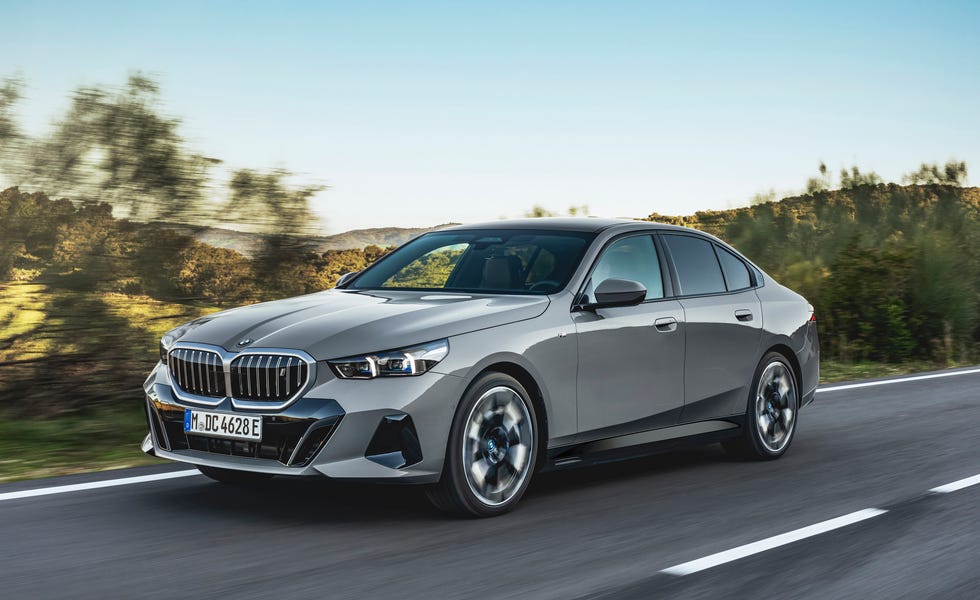 BMW
BMWBMW has paired the latest 5-series with a new electric variant dubbed the i5. The base eDrive40 model features a 335-hp motor powering the rear wheels, with the 84.3-kWh battery expected to eke out close to 300 miles of range. Until the full-fledged M variant (see below) arrives, the top dog in the i5 lineup will be the M60 xDrive, a dual-motor all-wheel-drive sports sedan good for 590 hp and a claimed 3.7-second sprint to 60 mph. The M60 shares the same battery, dropping the estimated range to 256 miles. The eDrive40 will start at $67,795 while the M60 will cost $85,095 when the EV sedans hit dealerships in the fall. —Caleb Miller
BMW i5 M (Expected: 2026)
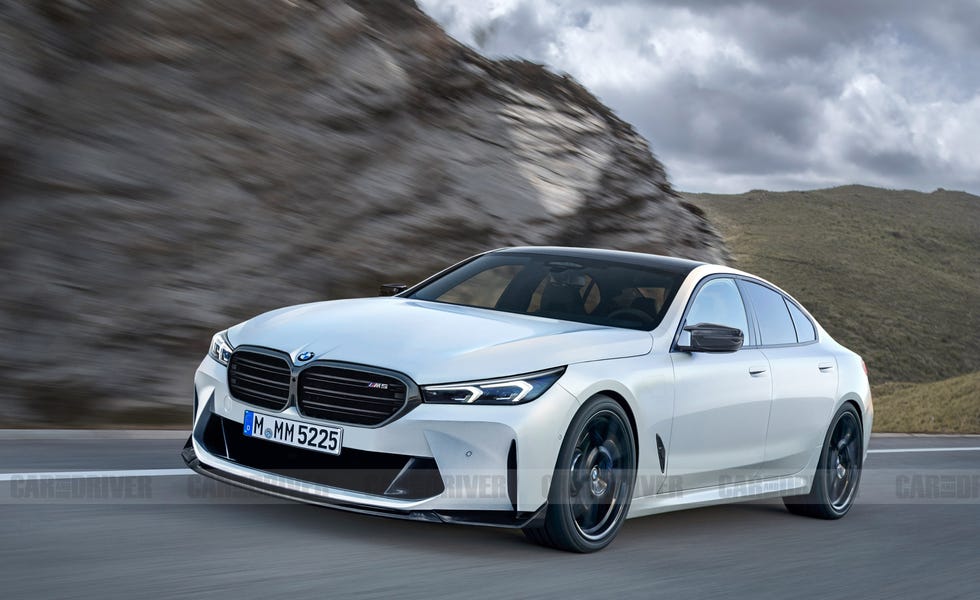 ILLUSTRATION BY CHRISTIAN SCHULTE|CAR AND DRIVER
ILLUSTRATION BY CHRISTIAN SCHULTE|CAR AND DRIVERFender flares, a more aggressive stance, and 1136 horsepower will combine to produce the upcoming BMW i5 M, which won’t arrive before than 2026. The new high-performance four-motor drivetrain will incorporate wheel-by-wheel torque vectoring and brake-by-motor energy regeneration, and will be capable of piloted drifting and tank turns where the vehicle can use its prodigious torque output to spin in place. While the more subdued i5 has already debuted—with its own set of high-performance batteries, active steering, and suspension fit for the Nurburgring—we can’t help but keep our focus on the angrier i5 M with a drive control unit that’s being referred to internally as the “Hand of God.” Take the wheel, Jesus. —Austin Irwin
Buick Electra (Expected: 2024)
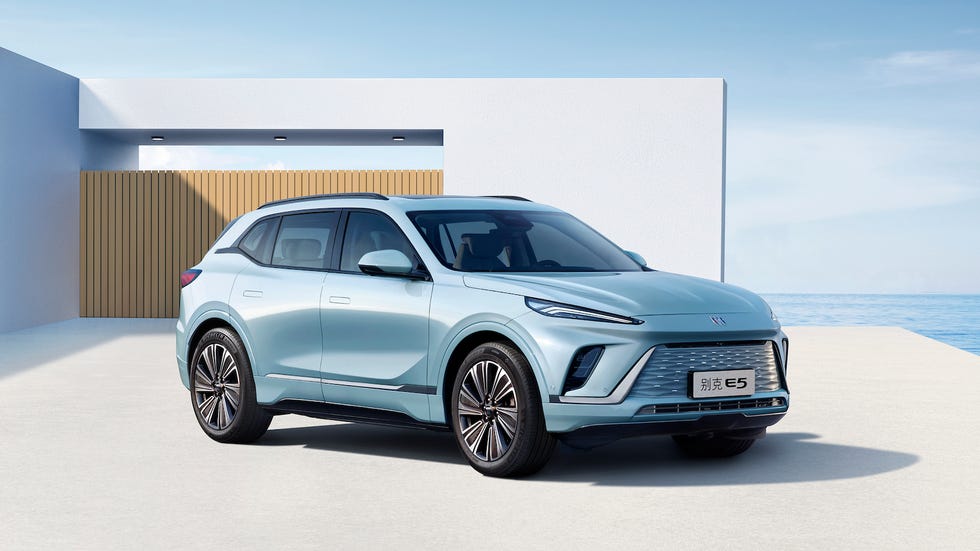 BUICK
BUICKBuick has revived the nameplate of the 18-foot-long steel sled from 1959 for its new all-electric SUV, that’s already been revealed for China. The Electra E5 uses GM’s Ultium battery platform and should be roughly the same size as a Chevrolet Equinox. An investigation into trademarks may have revealed Buick’s future lineup, with filings for Electra E1 through E9. We expect the Electra E5 to perform similarly to the already available Cadillac Lyriq, with a range of 300 miles and 340 horsepower. Buick hopes to put its tri-shield logo atop a fully-electric lineup by 2030, but we should see the first Electra sometime in 2024. —Austin Irwin
Cadillac Celestiq (Expected: Early 2024)
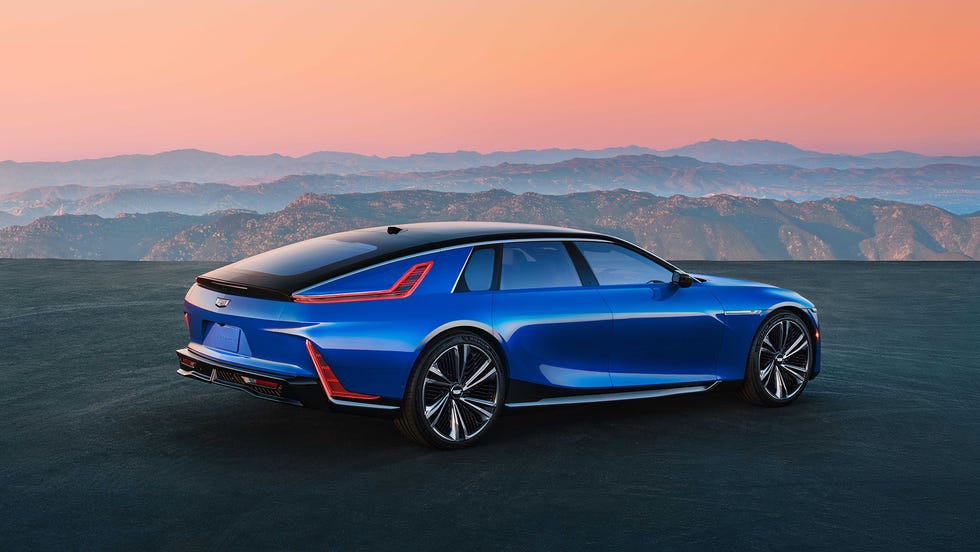 CADILLAC
CADILLACCadillac wants to return to the days when the company could call itself the Standard of the World without getting scoffed at. At least that’s the plan with the upcoming Celestiq, an extravagant EV that will be built by hand and cost upwards of $300K. That price puts it out of reach for all but the wealthiest people, but Cadillac envisions the Celestiq as aspirational rather than attainable. For the one percent who can afford one of these avant-garde 600-hp electric hatchbacks, each example can be uniquely tailored to the customers whims. Will it be enough to vault GM’s luxury brand into the discussion with Bentley and Rolls-Royce? We’ll have to wait and see once the Celestiq hits the streets of America’s richest communities—likely at the start of 2024. —Eric Stafford
Cadillac Escalade iQ (Expected: Summer 2024)
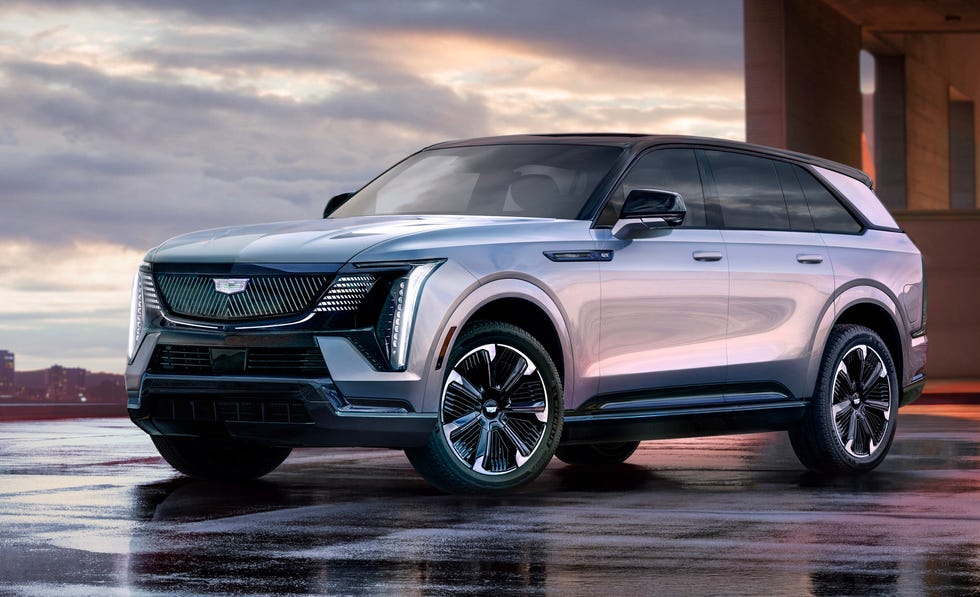 CADILLAC
CADILLACThe Cadillac Escalade—the big, brash SUV that’s proved popular among rappers like Jay-Z and 50 Cent—is undergo an electric transformation with the new Escalade iQ. With over 200-kWh of capacity, the Ultium battery—shared with the GMC Hummer EV—provides an estimated 450 miles of range, while the dual-motor powertrain can provide up to 750 horsepower. The luxurious cabin is decked out with 55 inches of screen stretching across the entire dashboard and a 40-speaker sound system. The Escalade IQ will be offered with Super Cruise, General Motors’ hands-free driving system, and will start around $130,000. —Caleb Miller
Canoo Pickup Truck (Expected: 2024)
 MORE INFOCAR AND DRIVER
MORE INFOCAR AND DRIVERCanoo is an electric automotive startup from California, and this is its pickup. For now, it is simply called Pickup Truck. The Canoo pickup promises more than 500 horsepower and at least 200 miles of range. It’s smaller than what’s typically found in the mid-size pickup segment, being two feet shorter than the Ford Ranger. Canoo says its pickup will be offered with a six- to eight-foot pickup bed with preorders open right now, and production starting sometime in 2024. The U.S. Army is also testing a modified version of the Pickup Truck. —Austin Irwin
Canoo Lifestyle Vehicle (Expected: 2023)
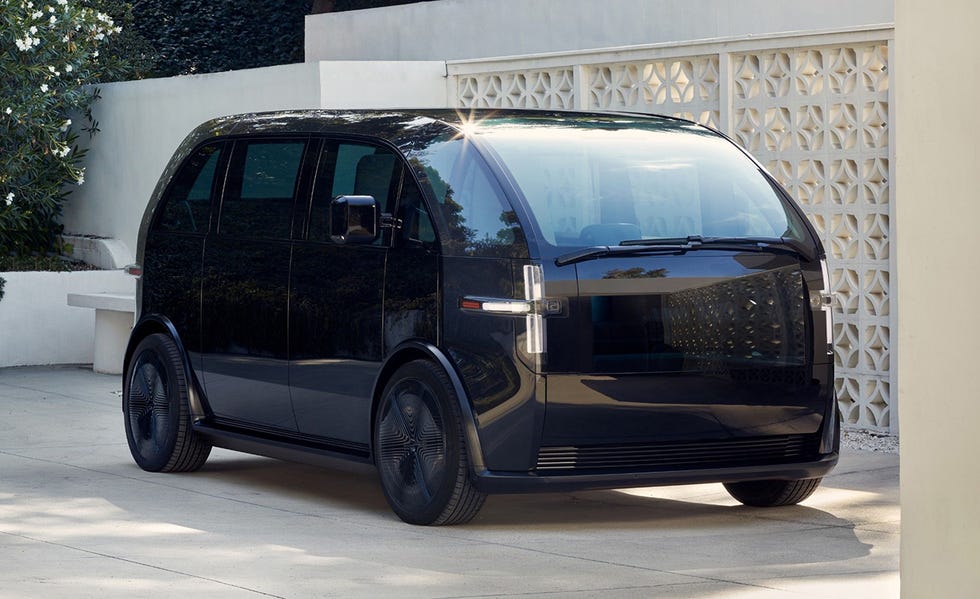 MORE INFOCANOO
MORE INFOCANOOLike Canoo’s pickup, this five- or seven-seat EV is built on a skateboard platform, similar to what BMW, Mercedes-Benz, and Volkswagen use to easily swap body styles on similar underpinnings. Canoo claims this little bus will have a range of 200 miles and up to 350 horsepower, with a starting price under $40,000. A delivery van version has attracted 4500 pre-orders from Walmart, while NASA has expressed interest in using the Lifestyle Vehicle for transport at the launch site for the upcoming Artemis moon-landing missions. Canoo has faced financial difficulties of late, but hopes to get production started this year —Caleb Miller
Chevrolet Blazer EV (Expected: 2023)
 CHEVROLET
CHEVROLETWe miss the boxy K5 Blazer of the 1980s and 1990s as much as anyone, but Chevy isn’t trucking around with the SUV’s next major transition. The Blazer EV, which will be sold alongside the gasoline-powered Blazer SUV, will offer an SS trim level that generates 557 horsepower with acceleration that could leave V-8 Camaros in its dust. Chevy plans to also offer less-aggressive trims that focus on affordability and range. While the EPA hasn’t certified anything yet, Chevy is shooting for 320 miles for its long-driving Blazer EV RS model. The Blazer EV is scheduled to go on sale later in 2023, with the lowest-priced 1LT trim joining the lineup sometime in 2024. —Austin Irwin
Chevrolet Equinox EV (Expected: 2024)
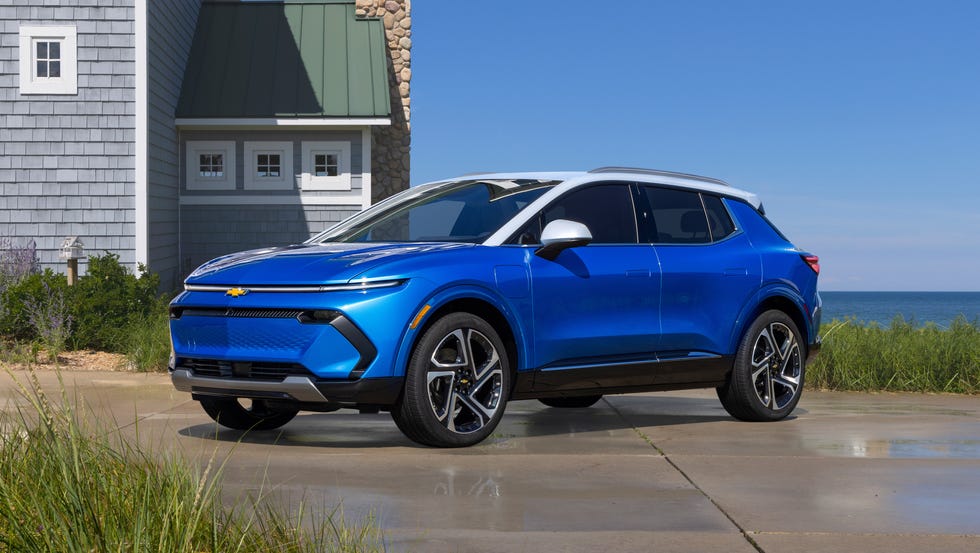 CHEVROLET
CHEVROLETLast year Chevy sold 212,072 units of its Equinox crossover, beating the likes of the Ford Escape, Hyundai Tucson, and Subaru Forester. It hopes to continue this success with an Equinox EV that will start at $34,995 with deliveries beginning in 2024, although the base model won’t arrive until later. The Equinox EV will offer a wide range of models starting with a base trim with 250 miles of range and 210 horsepower. More expensive trims offer up to 319 miles of range thanks to a larger battery pack, and dual-motor all-wheel-drive cars have 290 horsepower. —Joey Capparella
Chevrolet Silverado EV (Expected: 2023)
 VIEW PHOTOSMICHAEL SIMARI|CAR AND DRIVER
VIEW PHOTOSMICHAEL SIMARI|CAR AND DRIVERTurns out the GMC Hummer EV and SUV were a little taste of what we’ll see from Chevy’s upcoming all-electric Silverado. They’ll be built under the same roof, with the Silverado also using GM’s Ultium battery pack and offering up to 400 miles on a single charge. The Silverado EV will be offered from a fleet-oriented work truck trim to fully loaded RST models with 664 horsepower. In an effort to make good on its promise of 30 new EVs by 2025, production of Chevy’s first electric pickup will begin this year. —Austin Irwin
Chevrolet Corvette EV and SUV (Expected: 2025)
 GENERAL MOTORS
GENERAL MOTORSThe Corvette cinematic universe is about to plunge into a phase so wild that Marvel might start taking notes. Chevrolet has already confirmed that a fully electric Corvette is coming soon—sooner than we might think, since the E-Ray hybrid that recently broke cover was slated to make its debut first. The Corvette EV will use the same Ultium battery platform as other new GM EVs, and considering the General can get a fifty-trillion-ton Hummer EV to reach 60 mph in under 4 seconds, we have high hopes for the Corvette EV.
But wait, there’s more! We’re hearing rumors that the Corvette EV will launch into a new Corvette subbrand within GM, which will bring a host of new Corvette-branded models with it, including a four-door “coupe” and a high-performance crossover, which could easily position itself as a Ford Mustang Mach-E competitor—or something even beefier. —Andrew Krok
Chevrolet Bolt EV (Expected: 2025)
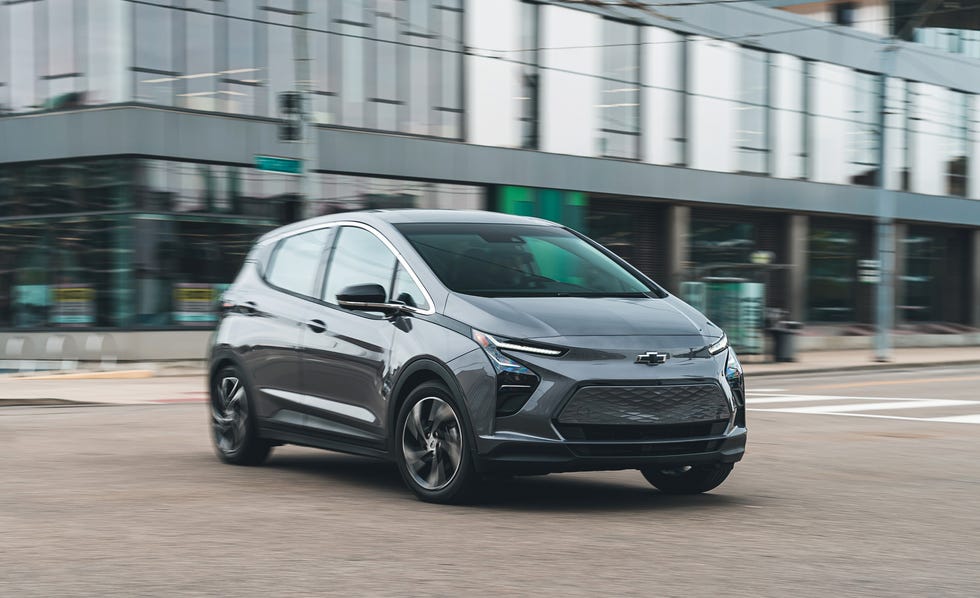 MARC URBANO|CAR AND DRIVER
MARC URBANO|CAR AND DRIVERWhat doesn’t kill you makes you stronger. Or—in the case of the Chevy Bolt—what does kill you makes you stronger. At least that’s the outlook of General Motors’ CEO, who confirmed the little EV’s revival in July. The Bolt will return for a second generation and Chevrolet promised that the electric hatchback will continue to be a tech-centric, affordable option. We know the next-gen Bolt will ride on the Ultium platform and it should arrive for the 2025 model year. We don’t know specifics yet, but we’re sure the new version will exceed the current Bolt’s EPA-estimated 259-mile range. —Jack Fitzgerald
Chrysler Airflow Concept (Expected: 2025)
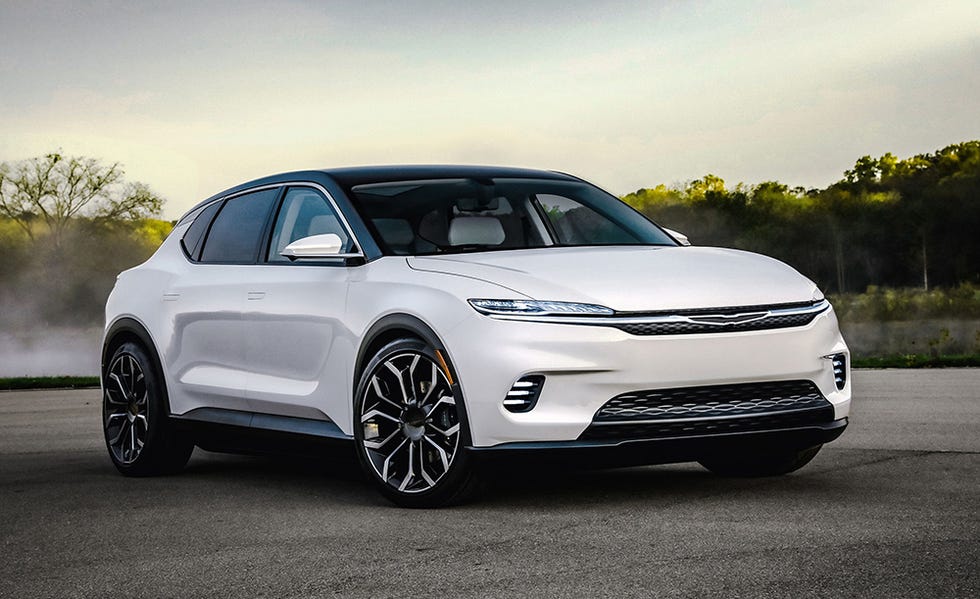 VIEW PHOTOSCHRYSLER
VIEW PHOTOSCHRYSLERWith the success of the Ford Mustang Mach-E in its crosshairs, Chrysler is planning a 400-mile crossover by 2025. The Airflow is just a concept, but the model is claimed to also offer Level 3 autonomous driving capability. The brand, which currently offers the Pacific minivan and Chrysler 300 sedan, plans to go fully electric by 2028. —Austin Irwin
Dodge Charger Daytona SRT EV (Expected: 2024)
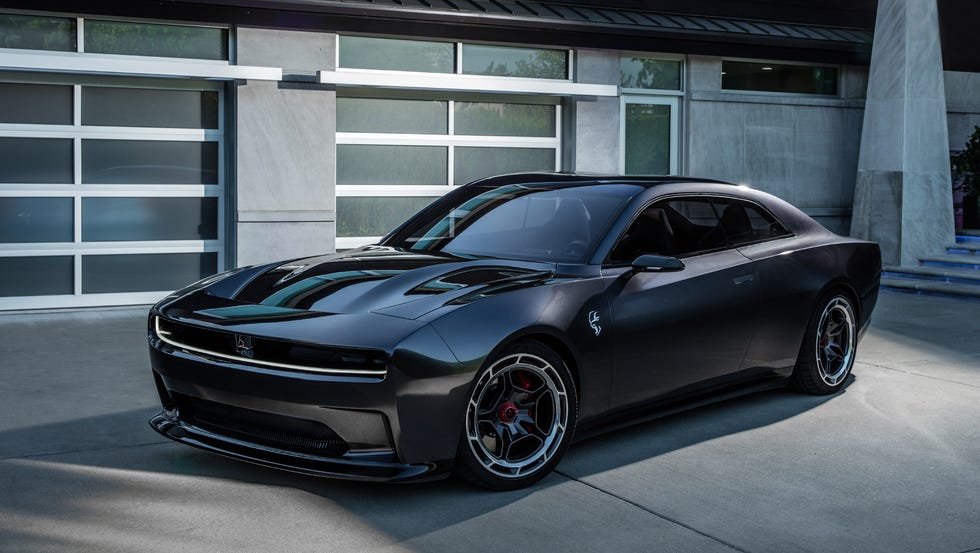 DODGE
DODGEDodge is determined to keep the muscle car relevant well into the electric epoch, and it’s given us quite the preview before its internal-combustion analogue has even left the dealership floor. The Dodge Charger Daytona SRT concept runs on an 800-volt electrical architecture called Banshee, and while performance details are still incredibly light, the automaker promises that its first beefcake EV will surpass the Hellcat’s performance. A multi-speed transmission hopes to keep some of the muscle car’s visceral nature alive, but the most interesting tech by far is the Fratzonic exhaust system, which uses actual piping to boost the EV’s sound to a 126-decibel onslaught. —Andrew Krok
Deus Vayanne (Expected: 2025)
 DEUS
DEUSWhile Austrian startup Deus (pronounced de-oos) is a complete unknown, the company has recruited proven partners for its first vehicle, the electric Vayanne hypercar. The curvy bodywork was penned by Italdesign, while Williams Advanced Engineering has been tasked with developing the 2200-hp powertrain. The company claims that with 1475 pound-feet of torque, the Vayanne launches to 62 mph in 1.99 seconds and on to a 248-mile top speed. We’ll believe it when we see it. Just 99 units are planned for production, with Deus aiming to start deliveries in 2025. —Caleb Miller
Faraday Future FF91 (Expected: 2023)
 FARADAY FUTURE
FARADAY FUTUREThe Faraday Future FF 91 was originally revealed back in 2017, and the California-based startup claims it finally delivered the first production unit in August. The sleek crossover boasts 1050 horsepower from a trio of electric motors, with a claimed sprint to 60 mph in just 2.3 seconds. According to the company, the 142.0-kWh battery delivers an EPA-estimated range of 381 miles. Prices for the 2.0 Futurist Alliance launch edition start at a whopping $309,000. Although Faraday Future has begun production at long last, its history of financial woes mean that the young automaker isn’t out of the woods just yet. If FF 91 production truly is underway, we hope to drive the electric SUV in the near future. —Caleb Miller
Fiat 500e (Expected: 2024)
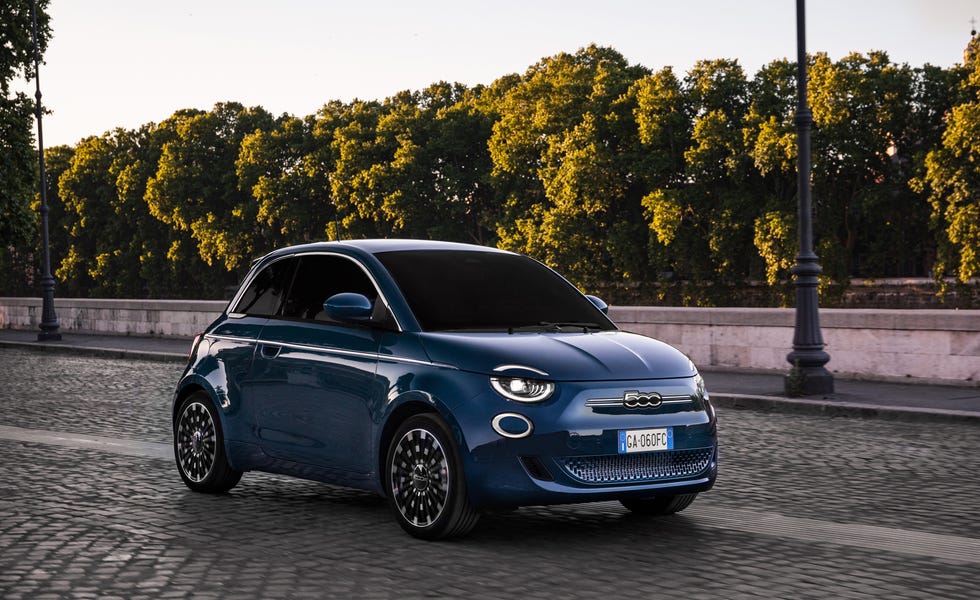 FIAT
FIATFiat’s future calls for an all-EV lineup that includes just one model, the 500e minicar. Based on the model that’s currently on sale in Europe, the 2024 500e combines the brand’s retro-modern design language with a 117-hp electric motor and a battery that should be good for about 160 miles of driving range per charge. In a market where larger and more luxurious electric vehicles regularly deliver over 200 miles of driving range, the 500e will launch at a significant disadvantage. Fiat’s plan though is to market it primarily in urban areas where drivers are less likely to require road-trip levels of range. We’ll see the U.S.-market 500e debut in November 2023 and hit dealers in early 2024. —Drew Dorian
Fisker Ocean (Expected: 2023)
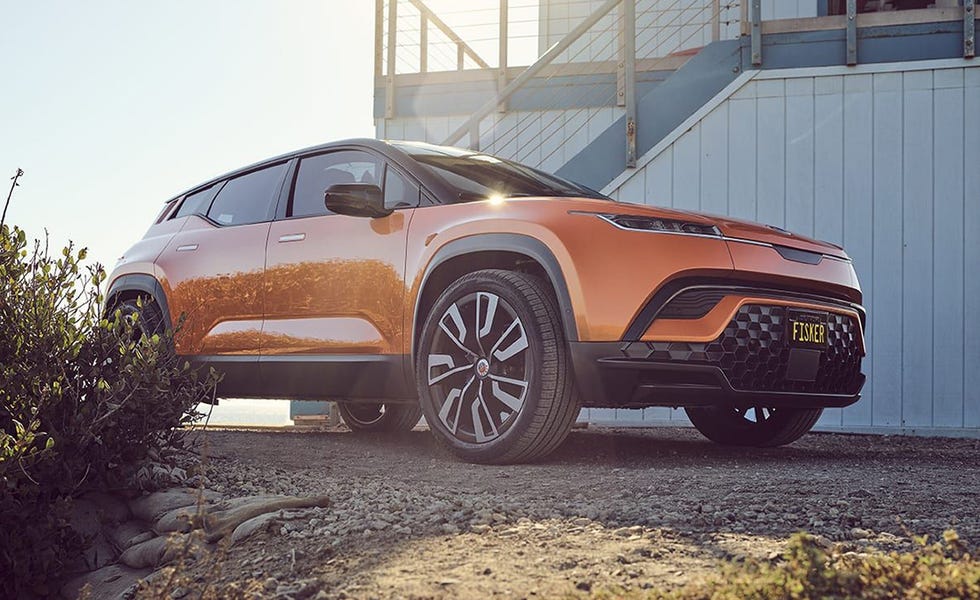 MORE INFOFISKER
MORE INFOFISKERA stylish 300-mile-range electric SUV with a solar roof sounds promising, and Henrik Fisker’s EV startup hopes to keep that promise with the Fisker Ocean. The Ocean earned a 360-mile range rating from the EPA when fitted with its biggest battery pack, a 113.0-kWh unit that is available in the top dual-motor all-wheel-drive trims. The most affordable Ocean, a single-motor front-wheel-drive version, will have a claimed 250 miles of range and start around $39,000. Fisker began producing the Ocean in the fourth quarter of 2022 and delivered the first 22 units to U.S. customers in June. Our first drive of the Ocean revealed a well-rounded EV with punchy acceleration and a roomy, comfortable cabin. —Austin Irwin
Fisker Pear (Expected: 2025)
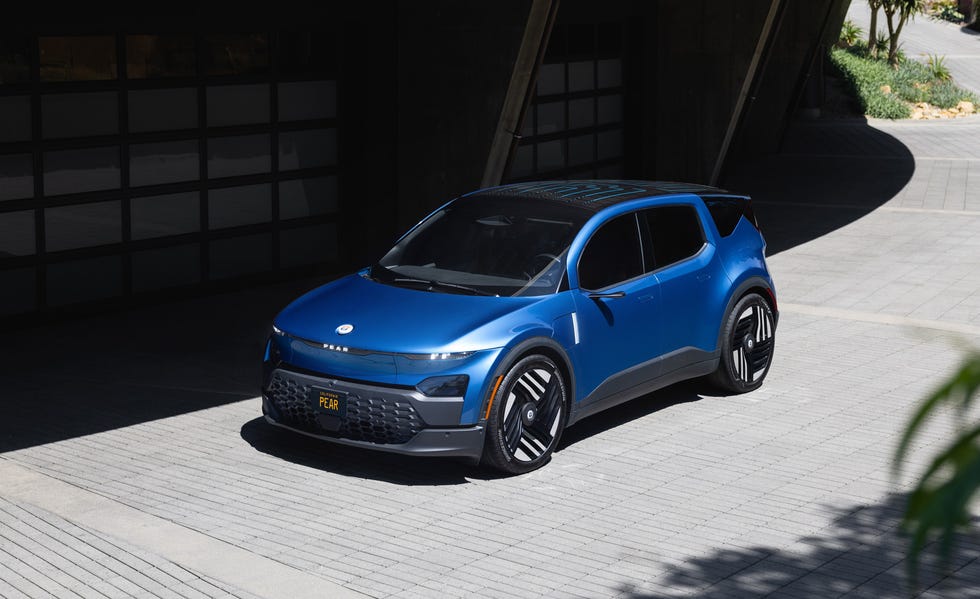 FISKER
FISKERFisker aims to conquer the entry-level EV market when it launches the Pear crossover in 2025. The starting prices is targeted at $29,900 (before destination), and the small SUV will offer rear- and all-wheel drive specifications with two battery options. Claimed range will be between 180 and 320 miles on the European test cycle; expect slightly lower estimates from the EPA. Fisker says the base model will hit 60 mph in a 6.3 seconds, while an Extreme model will further boost performance. Inside, an available front bench seat sits behind an optional 17.1-inch rotating display. Instead of a traditional trunk, the lift gate retracts into the bumper. Fisker previously suggested that the Pear could be built under contract by Foxconn at the Lordstown Assembly plant in Ohio. —Caleb Miller
Fisker Alaska (Expected: 2025)
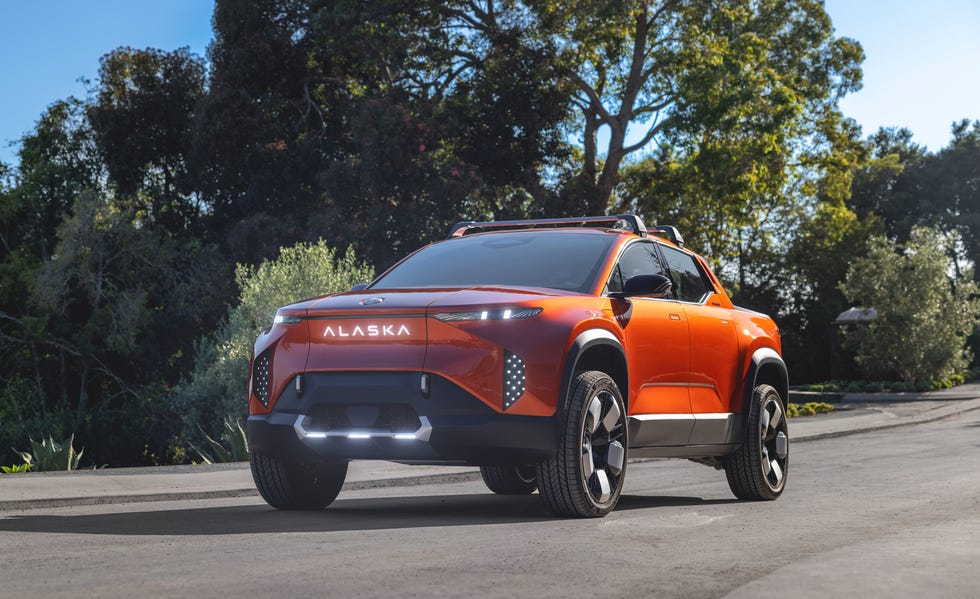 FISKER
FISKERFisker plans to follow up the Ocean crossover by bursting into the pickup truck market with the sharp-looking Alaska. Roughly the same size as a Rivian R1T, Fisker aims to sell the Alaska starting at just $45,400 when production kicks off in 2025. Fisker predicts a 230-mile range with the 75.0-kWh battery, while the 113.0-kWh unit will return a claimed 340 miles. Dual- and single-motor setups are expected, with acceleration estimated between 3.9 and 7.2 seconds depending on the model. The Alaska’s party piece is a divider behind the rear seats that electronically retracts, extending the 4.5-foot-long bed to 7.5 feet, or a maximum length of 9.2 feet with the rear seats folded flat. More details should arrive next year, and Fisker says the Alaska will be built in the U.S. —Caleb Miller
Fisker Rōnin (Expected: 2025)
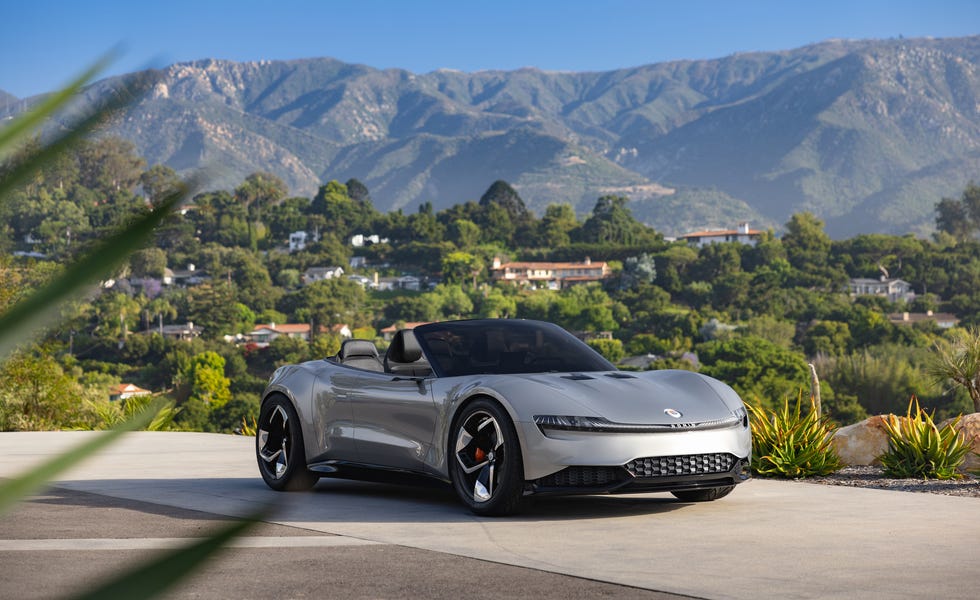 FISKER
FISKERAfter the Alaska and Pear arrive, Fisker will shift its attention to the range-topping Rōnin. This sleek four-door hardtop convertible will be limited to just 999 units when production begins in the second half of 2025. The performance claims are otherworldly—1000 hp from the three-motor powertrain combines with all-wheel drive to rocket the Rōnin to 60 mph in 2.0 seconds en route to a 170-mph top speed. Despite those mind-bending claims, Fisker also asserts that the Rōnin will have a 600-mile range. If and when the Rōnin is ready, Fisker says it will cost $385,000. —Caleb Miller
Ford Explorer EV (Expected: 2023)
 MORE INFOFORD
MORE INFOFORDThe Ford Explorer is among the most popular SUVs sold in the U.S., so giving it the fully electric treatment is an obvious move. Ford announced in May 2021 that its three-row SUV would be joining the Mustang Mach-E and the E-Transit electric van in Ford’s growing electric lineup. Though the current Explorer offers a 318-hp hybrid V-6 powertrain, we suspect that, like with the Mach-E and F-150 Lightning, there are rear- and all-wheel-drive Explorer EV models planned. —Austin Irwin
GMC Sierra EV (Expected: Early 2024)
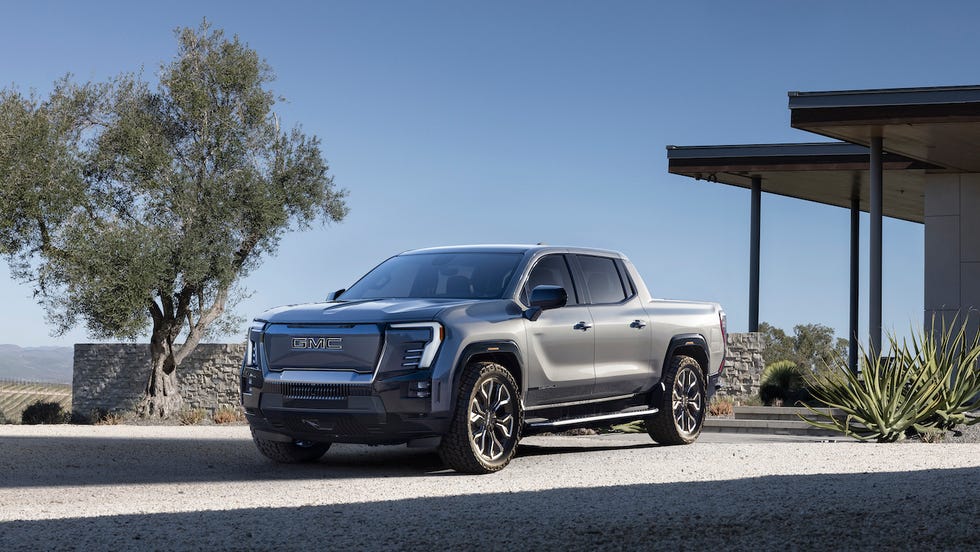 GMC
GMCGet ready for the GMC Sierra EV, the brand’s first electric pickup truck. While it shares bones with the extroverted GMC Hummer EV, the Sierra is less extreme in many ways. That doesn’t mean initial examples will be as affordable as its corporate counterpart, the upcoming Chevy Silverado EV. The electric Sierra will launch sometime in early 2024 with only the Denali Edition 1. This top-spec model includes a 754-hp all-wheel-drive powertrain with an estimated 400 miles of range—but it’ll cost nearly $109K. That six-figure price includes GM’s Super Cruise hands-free driving system, rear-wheel steering that enables Crab Walk, and an interior with the nicest materials GMC offers. Thankfully, less expensive Sierra EV models will follow in 2025. —Eric Stafford
Honda Prologue (Expected: 2024)
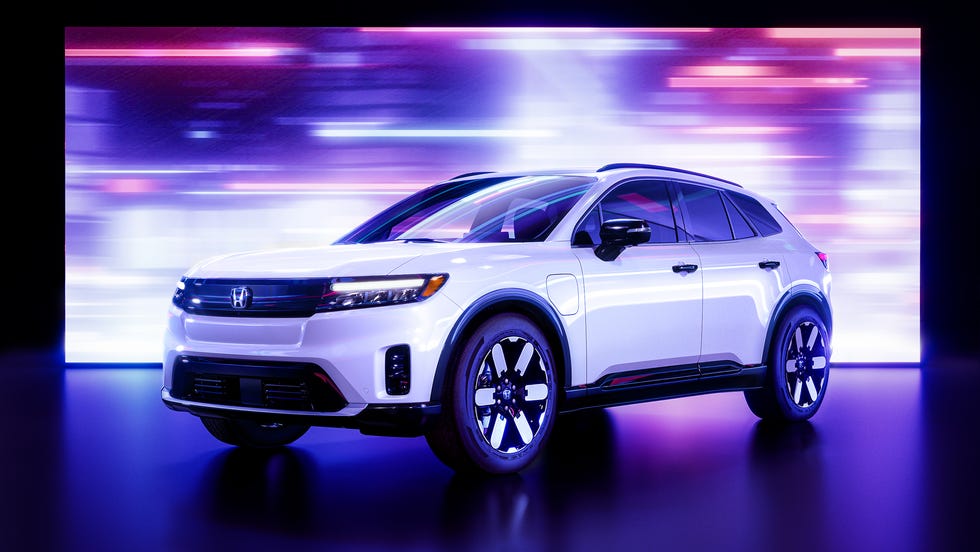 HONDA
HONDAHonda doesn’t currently offer a fully electric model in the U.S., but that’s all about to change. Set to arrive in 2024, the Honda Prologue is a mid-size SUV that’s around the same size as the Passport. Through a partnership with General Motors on EV powertrains, this new EV will use GM’s Ultium battery packs and appears to share components with the Chevy Blazer EV. Initial renderings show that the Prologue has a clean design inside and out, but we don’t yet know mechanical details. Expect single- and dual-motor configurations and multiple battery-pack sizes. As the name implies, the Prologue is the first of many upcoming electric vehicles from the brand. Acura also plans to add a fully electric model to its lineup that will be called ZDX. Honda has committed to selling only EVs by 2040. —Joey Capparella
Honda and Chevrolet Compact SUVs (Expected: 2027)
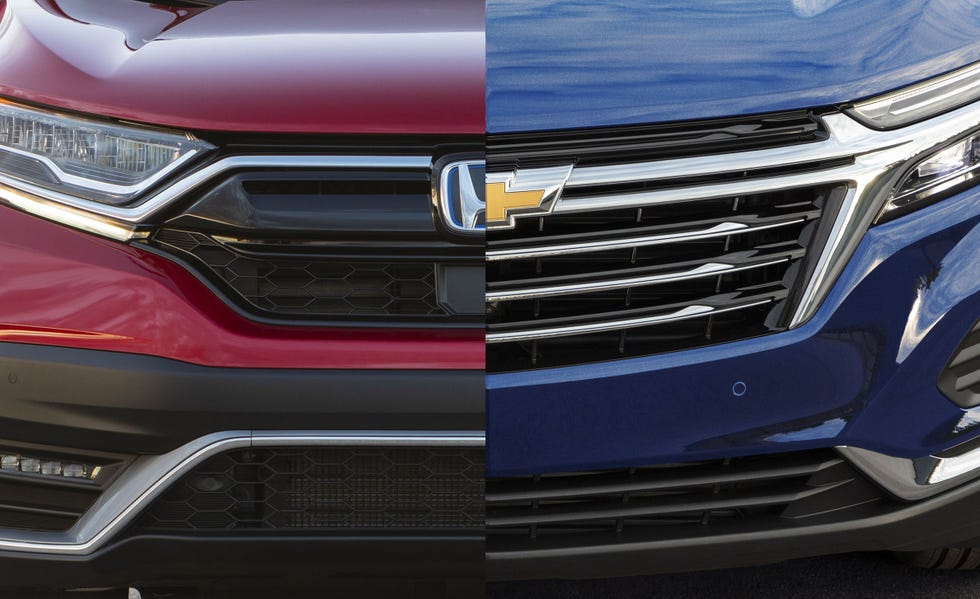 MORE INFOHONDA AND CHEVROLET
MORE INFOHONDA AND CHEVROLETAdding to their combined efforts to produce the Acura ADX and Honda Prologue, GM and Honda will continue their partnership to create a line of affordable electric compact SUVs. The new models will share a common platform with alternative batteries and materials. The objective of these endeavors is to lower the cost of producing an EV to help shrink the pricing disparity between gasoline and electric models. The automakers say these new affordable models are planned to launch sometime in 2027. —Austin Irwin
Hyundai Ioniq 7 (Expected: 2024)
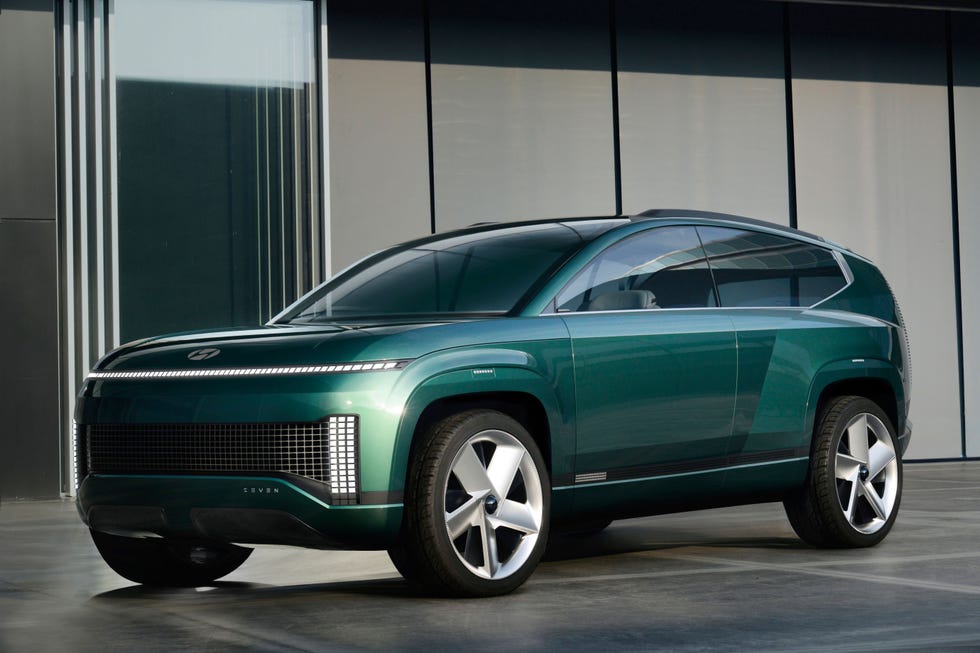 VIEW PHOTOSHYUNDAI
VIEW PHOTOSHYUNDAIBuilt on the same E-GMP platform as the Ioniq 5 mentioned above, the Ioniq 7 will be similar to the current three-row Palisade in size. Currently, Hyundai has only shown us this concept, but judging by its current design language on production models, it’s possible the real 7 could look even crazier. On a bigger SUV like this, we expect a large battery that could support at least 300 miles of range. —Austin Irwin
Hyundai Ioniq 5 N and 6 N (Expected: 2024)
 HYUNDAI
HYUNDAIHyundai’s hopped-up N division isn’t about to cease existing as the Korean automaker shifts from internal combustion to electric propulsion. If anything, things are getting even wilder with the 601-hp Hyundai Ioniq 5 N. A boost mode unlocks an extra 40 ponies from the two motors, shooting the Ioniq 5 N to 60 mph in a claimed 3.4 seconds. There’s also a drift mode for shredding tires, simulated gearshifts to create a more engaging electric driving experience, and three sound profiles including one that mimics the turbo four-cylinder from the Elantra N. Sales start early next year. The Ioniq 5 N is expected to be joined by an Ioniq 6 N, which will likely share the same hardware and should look something like the RN22e concept. —Andrew Krok




